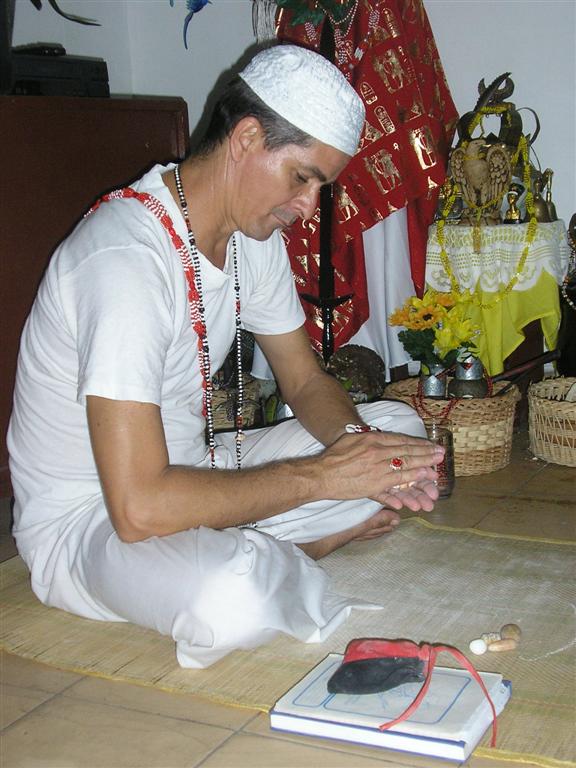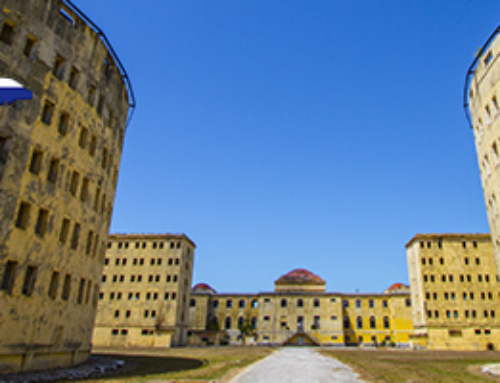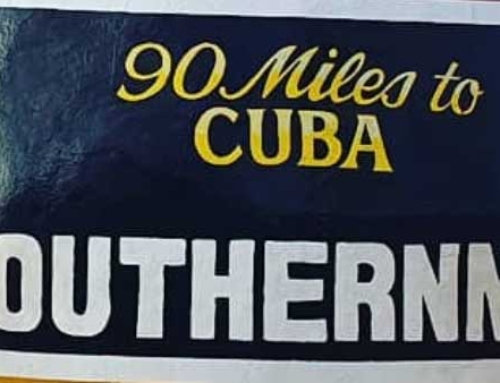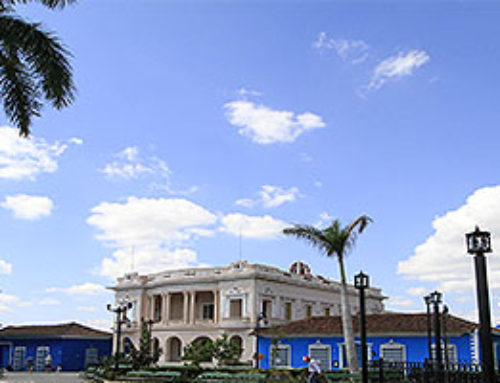Statistics
Santeria and the various religious practices it includes
- Regla de Ocha originates from the traditional beliefs of the Yoruba tribe in Western Africa and the regions of Nigeria and Benin.
- Regla de Palo or Palo Monte – the followers of this branch worship Nasambi, the soul of their ancestors and the spirits of nature that live in the trees, rivers, and seas. During the Colonial Period Regla de Palo was forbidden in Cuba, as it was thought by the Spanish to be witchcraft. This is why its followers conducted their rituals in special temples called Nso Nganga. This is a video of a Regla de Palo ritual, in which unlike other Santeria rituals they are not looking for orisha /deity/, but rather the believers connect with the spirits of the dead for enlightenment. They sacrifice goats and hens in order to appease the dead so that they could lead the new follower.
- Abacua is a secret society that accepts only men. It comes from South-West Nigeria and North Cameroon. This is an African esoteric society with its own rituals, beliefs, languages, and songs. Nowadays it is practiced in the Havanа neighborhood of Regla and Marianao, where you will also find Tropicana, San Miguel del Padron, and Guanabacoa. In the province, you can see Abacua rituals in Matanzas and in the city of Cardenas near Varaderо.
- Later new ethnic groups come to Cuba from Haiti and bring another religion called Voodoo. They are fairly less than the other religious communities. Voodoo is connected with shamans. The word “voodoo” means “spirit”. It is a culture, philosophy, art, music and dances, language, folk medicine, justice, power over the extraterrestrial, traditions, and rituals. An important part of Voodoo are the group rituals for connection with the ancestors, during which they fall into trans through rhythms, music, dance, and drugs. Voodoo is not so widely practiced – it can be seen mainly around Santiago de Cuba and the eastern part of the country. Nowadays Voodoo is the religion of the Republic of Benin, as well as of some of its neighbouring countries in Western Central Africa.
Santeria rituals
- Santo in Santeria is the equivalent of baptism in Christianity. Many of the believers in Regla de Ocha, Yoruba, and part of the other branches of Santeria conduct the Santo ritual. It can be implemented only by a priest called Babalawo. According to the custom, every believer should overgo Santo in order to know one’s orishas – personal deity and protector. Further, I have given a list of the most common deities connected with various earth, water, or fire elements. Because of the combination of religions many of the elements have their equivalents in Christianity. During the ceremony, which varies depending on the Santeria branch, the believer finds one’s orisha-guardian. Babalawo says that the orishas/deities/ pick the people and not the people their orishas. After the ritual, the believer gets dressed in white and follows a period of abstention for a year. They also wear bracelets with the colours of their protector orisha.

- The Santeria rituals vary depending on the branch. The rituals are conducted for different important occasions when somebody is sick or is suffering hardship. Usually, the rituals involve objects such as candles, fruits, sweet pastries, gifts called “adimu” and others. When fortune-telling the Babalawo might want a favourite fruit or an animal of his or can ask the person to follow particular advice, for example, to quit drinking or smoking, or to wear a piece of particular jewelry. The sacrifice of animals is called “ebo” and is conducted mostly on more serious occasions such as Santo, holidays, in sickness, or great misfortune. You might often find hen heads or legs, flowers, or other gifts at the stem of the sacred tree in Cuba CEIBA which is thought to be a home of spirits. Ceiba trees are never cut down and are a decoration of every important spot or central square in Cuban cities. It is not a coincidence that during the establishment of Havanа in 1514 they planted a Ceiba. Even today on every anniversary of the establishment of the Cuban capital Havana citizens walk in circles around the tree.
- Bembé is an important religious dance in which the orishas /the gods/ are summoned through prayers, and musical instruments to meet and dance with the believers.
Santero and Babalawo – the Cuban priests and healers
In Santeria existing is connected with understanding nature, the supreme forces, special rituals, and clairvoyance. Slaves brought to Cuba various religious costumes including trans, a system for fortune-telling and communicating with one’s ancestors and the gods, the sacrifice of animals, sacred drums, and dances. A part of the religious rituals are inherited by the Indians from the Tahino tribe – the indigenous population of Cuba, slaughtered by the conquistadors. The contemporary Cuban society relies on the Babalawo and/or Santero for their Santo – their consecration into Santeria, advice on what to do in order to be happier, or to see one’s future.

————————————
Deities in Santeria
It is believed that the orishas /the deities, the gods/ rule and guard the world and that every mortal human being has a destiny and a mission on earth they are bound to fulfill under the guidance of the orishas. The deities originate from the tribes and the slaves’ ancestors. There are thousand of orisha but here we will list the most important and most worshiped ones.
Olofi or Olofi Aye. The supreme god, the creator. The Santeria equivalent of Jesus.
Obatala. The great Zcar of light.
- Obatala is the god of consciousness and reason. According to the beliefs he lives on mountain tops.
San Lazaro. The protector of the wronged, sick and poor.
- The cult of San Lazaro is a result of the mixture between Christianity and African beliefs. San Lazaro in the Bible is described as the friend of Jesus and brother og Mary Magdalene, the beggar in the Gospel of Lucas, as well as the Babalú Ayé orisha who has been united by the African slaves with the abovementioned Bible characters . The colour of the deity is purple. In Cuba there are a lot of monuments of San Lazaro covered in wounds and surrounded by puppies. Every 17th of December thousand of Cubans gather in a special pilgrimage called “promesa” to the Church El Rincon. Many of the pilgrims crawl the last kilometres and some even walk all the way to the temple from Santiago de Cubа.
Chango – the god of war, thunder, lightning, and fire
- The Chango cult comes from the Oyo tribes. He is the god of war, thunder, lightning, and fire. Because of Catholic influence, the equivalent of Chango in Christianity is Saint Barbara. The symbolic colour here is red.
Oshun. Femininity, intimacy, tenderness, and love.
- The Oshun cult – the goddess of femininity, intimacy, tenderness, love, and coquetry comes from the tribes of Ekiti, Osogbo, and Iyesá. The symbolic colour is yellow and this is why the gifted flower here is the sunflower. The equivalent of Oshun in Catholicism is Our Lady of Charity of El Cobre – the patron saint and protector of Cuba.
Elegua. This is the way.
Elegua is the messenger of the supreme god Olofi /Olofi Aye/. Elegua shows the path to prosperity, (un)happiness, or blocks it. The symbolic colours of Elegua are black and red.
Yemaya. Water, sea, rivers, ocean, water elements, and the blue.
- The cult of the god of waters, the patron of Havana Bay comes from the Egba, Nupe, Tara, Abeokuta, and Ibadan tribes. The symbolic colour here is blue. Yemaya is also the protector of fishermen and captains.
Ogun. The god of metals, human labour, the struggle for survival, and war.
This is maybe the most aggressive deity in Santeria mythology. His symbolic colours are dark blue, green, and black. Ogun is also the protector of the humiliated losers in a fight.
————————————
Dances
Rumba reflects the spirit of the gods. There are different dances that represent different orishas. The used symbols are snails and the little stones that the African slaves found on the island of Cuba. They use them as percussion instruments and sing nostalgic songs about Africa, their native land, and almost lost traditions. It is actually believed that the lute, drums, and bongo are used to summon the orishas. This is why rumba doesn’t exist without percussion instruments. When the dancer is dressed in blue and moves smoothly she represents the Yemaya goddess. When you see a warrior in red performing in a belligerent way this is undoubtedly Chango. The graceful Oshun, the symbol of love and feminine harmony is dressed in yellow. She moves gently in a way that you could fall in love with… Out tourists always visit the places of the secret presence of the gods through dances. Read more about the dances and music in Cuba here.










